Musíte být přihlášen
-
moreX
-
Komponenty
-
-
Category
-
Polovodiče
- LED diody
- Tyristory
- Elektroizolační moduly
- Přemosťovací usměrňovače
-
Tranzistory
- Tranzistory | GeneSiC
- SiC MOSFET moduly | Mitsubishi
- SiC MOSFET moduly | STARPOWER
- Moduly ABB SiC MOSFET
- Moduly IGBT | MITSUBISHI
- Tranzistorové moduly | MITSUBISHI
- Moduly MOSFET | MITSUBISHI
- Tranzistorové moduly | ABB
- Moduly IGBT | POWEREX
- Moduly IGBT | INFINEON (EUPEC)
- Polovodičové prvky z karbidu křemíku (SiC)
- Go to the subcategory
- Ovladače brány
- Bloky napájení
- Go to the subcategory
- Měniče proudu a napětí LEM
-
Pasivní součásti (kondenzátory, rezistory, pojistky, filtry)
- Rezistory
-
Pojistky
- Miniaturní pojistky pro elektronické obvody řady ABC a AGC
- Trubkové rychle působící pojistky
- Pojistkové vložky s časovým zpožděním s charakteristikami GL / GG a AM
- Ultrarychlé pojistkové články
- Rychle působící pojistky (britský a americký standard)
- Rychle působící pojistky (evropský standard)
- Pojistky pojezdu
- Pojistkové vložky vysokého napětí
- Go to the subcategory
-
Kondenzátory
- Motorové kondenzátory
- Elektrolytické kondenzátory
- Filmové kondenzátory
- Výkonové kondenzátory
- Kondenzátory pro stejnosměrné obvody
- Kondenzátory korekce účiníku
- Vysokonapěťové kondenzátory
- Indukční topné kondenzátory
- Kondenzátory pulsu a energie
- DC LINK kondenzátory
- Kondenzátory pro AC / DC obvody
- Go to the subcategory
- EMI filtry
- Superkondenzátory
- Přepěťová ochrana
- Go to the subcategory
-
Relé a stykače
- Teorie relé a stykačů
- 3fázová střídavá polovodičová relé
- 3fázová střídavá polovodičová relé
- Regulátory, ovládací prvky a příslušenství
- Měkké spouštění a reverzační stykače
- Elektromechanická relé
- Stykače
- Otočné spínače
-
Jednofázová střídavá polovodičová relé
- Jednofázová střídavá polovodičová relé, 1 řada | D2425 | D2450
- Jednofázová střídavá polovodičová relé řady CWA a CWD
- Jednofázová střídavá polovodičová relé řady CMRA a CMRD
- Jednofázová střídavá polovodičová relé řady PS
- Dvojitá a čtyřnásobná střídavá polovodičová relé řady D24 D, TD24 Q, H12D48 D.
- Jednofázová polovodičová relé řady GN
- Jednofázová střídavá polovodičová relé řady CKR
- Jednofázová AC relé na lištu DIN řady ERDA A ERAA
- Jednofázová AC relé pro proud 150 A.
- Dvojitá polovodičová relé integrovaná s chladičem pro lištu DIN
- Go to the subcategory
- Jednofázová AC polovodičová relé pro PCB
- Relé rozhraní
- Go to the subcategory
- Jádra a další indukční součásti
- Radiátory, varistory, tepelné ochrany
- Fanoušci
- Klimatizace, příslušenství pro elektrické skříně, chladiče
-
Baterie, nabíječky, vyrovnávací zdroje a střídače
- Baterie, nabíječky - teoretický popis
- Lithium-iontové baterie. Vlastní baterie. Systém správy baterií (BMS)
- Baterie
- Nabíječky baterií a příslušenství
- Záložní zdroj UPS a vyrovnávací napájecí zdroje
- Převaděče a příslušenství pro fotovoltaiku
- Úschovna energie
- Palivové články
- Lithium-iontové baterie
- Go to the subcategory
-
Automatika
- Futaba Drone Parts
- Koncové spínače, mikrospínače
- Senzory, převodníky
- Pyrometrie
- Počítadla, časovače, panelové měřiče
- Průmyslová ochranná zařízení
- Světelná a zvuková signalizace
- Termovizní kamera
- LED displeje
- Tlačítka a spínače
-
Zapisovače
- Zapisovač AL3000
- Rekordér KR2000
- Rekordér KR5000
- Měřič HN-CH s funkcí registrace vlhkosti a teploty
- Spotřební materiál pro zapisovače
- Rekordér 71VR1
- Zapisovač KR 3000
- Počítačové rekordéry řady R1M
- Počítačové rekordéry řady R2M
- PC rekordér, 12 izolovaných vstupů - RZMS-U9
- PC rekordér, USB, 12 izolovaných vstupů - RZUS
- Go to the subcategory
- Go to the subcategory
-
Kabely, dráty, vodiče, flexibilní připojení
- dráty
- lanka
- Kabely pro speciální aplikace
- košile
-
prýmky
- prýmky byt
- prýmky kolo
- Velmi flexibilní opletení - plochý
- Velmi flexibilní opletení - Round
- Měď opletené válcové
- Mědí štít a válcové
- Flexibilní zemnící pásky
- Opletení válcovité pozinkované a nerezové oceli
- PVC izolované měděné pletivo - teplota 85 ° C
- Ploché pletené hliníkové
- Connection Kit - prýmky a trubky
- Go to the subcategory
- Příslušenství pro trakční
- kabelové botky
- Ohebné izolované přípojnice
- Vícevrstvá ohebná lišta
- Systémy vedení kabelů
- Potrubí, trubky
- Go to the subcategory
- View all categories
-
Polovodiče
-
-
- Suppliers
-
Applications
- AC a DC pohony (střídače)
- Automatizace HVAC
- CNC obráběcí stroje
- Energy bank
- Indukční ohřev
- Komponenty pro prostředí s nebezpečím výbuchu (EX)
- Měření a regulace teploty
- Měření a regulace teploty
- Motory a transformátory
- Napájecí zdroje (UPS) a usměrňovací systémy
- Průmyslová automatizace
- Průmyslová automatizace
- Průmyslová ochranná zařízení
- Stroje na sušení a zpracování dřeva
- Stroje na tvarování plastů za tepla
- Svařovací stroje a svářecí stroje
- Těžba, hutnictví a slévárenství
- Tisk
- Tramvajová a železniční trakce
- Zařízení pro distribuční, řídicí a telekomunikační skříně
-
Instalace
-
-
Induktory
-
-
Indukční zařízení
-
-
https://www.dacpol.eu/pl/naprawy-i-modernizacje
-
-
Servis
-
- Kontakt
- Zobacz wszystkie kategorie
Types of temperature sensors

We use temperature sensors every day to regulate, for example, the temperature in buildings, to regulate water temperature. Temperature sensors are also needed in many other applications such as consumer, medical and industrial electronics.
Each application may have different needs for temperature sensors. They differ in what is being measured (air, mass, or liquid), where it is being measured (indoors or outdoors), and the range of temperature measured, among other things.
Today we will focus on 7 types of temperature sensors and devices used indoors and outdoors - how they work, what sets them apart, and the pros and cons of these solutions.
Thermocouples
Thermocouples are the most commonly used type of temperature sensor. They are used in industrial, automotive and consumer applications. Thermocouples are self-powered, require no excitation, can operate over a wide temperature range and have a fast response time.
Thermocouples are made by joining two different metal wires together. This results in the Seebeck effect. The Seebeck effect is a phenomenon in which a temperature difference between two different conductors causes a voltage difference between the two substances. It is this voltage difference that can be measured and used to calculate the temperature.
There are several types of thermocouples that are made of different materials, allowing for different temperature ranges and different sensitivities. The different types are distinguished by letter designations. Types include: E, J, K, N, T, R/S, B.
Some disadvantages of thermocouples include the fact that temperature measurement can be difficult due to their low output voltage that requires precise amplification, susceptibility to external noise on long wires and cold junction. The cold junction is where the thermocouple wires meet the copper signal circuit paths. This creates another Seebeck effect that must be compensated for, called cold junction compensation.
Resistance Temperature Sensors – RTS
As the temperature changes, the resistance of each metal also changes. This difference in resistance is what resistive temperature sensors are based on. An RTS is a resistor with well-defined resistance characteristics as a function of temperature. Platinum is the most common and most accurate material used to make this type of sensor.
Platinum RTS are most common because they offer a nearly linear response to temperature changes, are stable and accurate, provide repeatable response, and have a wide temperature range. Resistive temperature sensors are often used in precision applications because of their accuracy and repeatability.
RTS elements tend to have higher thermal mass and therefore respond more slowly to temperature changes than thermocouples. Signal conditioning is important for RTS. They also require an excitation current to flow through the sensors. If this current is known, the resistance can be calculated.
Thermistors
Thermistors are similar to resistive sensors in that changes in temperature cause measurable changes in resistance. Thermistors are usually made of polymer or ceramic material. In most cases, thermistors are less expensive, but they are also less accurate than RTS. Most thermistors are available in two-wire configurations.
The Negative Temperature Coefficient (NTC) thermistor is the most commonly used thermistor for measuring temperature. The resistance of an NTC thermistor decreases as the temperature increases. Thermistors have a non-linear dependence of resistance on temperature. This requires significant correction for correct data interpretation. A popular approach to using a thermistor is to have the thermistor and a fixed value resistor form a voltage divider with an output that is converted to a digital value by an ADC.
Semiconductor based ICs
Semiconductor temperature sensors come in two different types: the local temperature sensor and the remote digital temperature sensor. Local temperature sensors are integrated circuits that measure the temperature of their own die using the physical properties of the transistor. Remote digital temperature sensors measure the temperature of an external transistor.
Local temperature sensors can use analogue or digital outputs. Analog outputs can be voltage or current while digital outputs can be seen in several formats such as I²C, SMBus, 1-Wire® and Serial Peripheral Interface (SPI). Local temperature sensors sense the temperature on circuit boards or the surrounding air.
Remote digital temperature sensors work similarly to local temperature sensors, using the physical properties of a transistor. The difference is that the transistor is placed away from the sensor chip. Some microprocessors and FPGAs include a bipolar sensor transistor to measure the die temperature of the target IC.
Infrared Sensors
Infrared sensors are non-contact sensors. For example, if you apply a typical infrared sensor to the front of a desk without contact, the sensor will tell you the temperature of the desk based on its radiation - probably room temperature.
With a non-contact ice water measurement, the measurement will be slightly below 0 °C due to evaporation, which may slightly lower the expected temperature reading.
Phase-change temperature sensors
Phase-change sensors measure the change in state of a material caused by a change in temperature, as when ice changes to water and then to steam. Commercially available devices of this type come in the form of labels, lozenges, crayons, or varnishes.
For example, labels can be used on steam traps. When a steam trap needs adjustment, it becomes hot; then a white dot on the label indicates the increase in temperature by turning black. The dot will remain black even if the temperature returns to normal levels.
Temperature labels are useful when confirmation is needed that the temperature has not exceeded a certain level, for example for technical or legal reasons during transportation. Because variable phase devices are non-electrical, like a bimetallic strip, they have an advantage in some applications. Some forms of this family of sensors (paint, crayons) do not change color; the marks made by them simply disappear. The lozenge version visually deforms or dissolves completely.
The limitation is the relatively slow response time. Therefore, if there is a temperature spike going up and then down very quickly, there may be no visible response. Accuracy is also not as high as most other devices commonly used in industry. However, they are very practical for applications where you need an irreversible indication that does not require electrical power.
Other labels that are reversible operate on a completely different principle, using a liquid crystal display. The display changes color from black to brown, blue or green, depending on the temperature reached.
Silicon diode
A silicon diode sensor is a device that has been developed specifically for the cryogenic temperature range. They are essentially linear devices in which the conductivity of the diode increases linearly in the low cryogenic ranges.
Regardless of the sensor you choose, it will likely not work on its own. Since most sensors overlap in temperature range and accuracy, the choice of sensor will depend on how it is integrated into the system.
Temperature sensors - Summary
Thermocouples, resistance sensors, thermistors and semiconductor integrated circuits are the main types of temperature sensors used today. Thermocouples are inexpensive, durable and can measure a wide range of temperatures. RTS's offer a wide range of temperature measurements (although they are smaller than thermocouples) and provide accurate and repeatable measurements. However, they are slower, require excitation current and require signal conditioning. Thermistors are durable and small, but are less accurate than resistive sensors and require more data correction for temperature interpretation. Semiconductor ICs are flexible to implantation and can come in very small form factors, but have a limited temperature range.
The rest of the solutions that have been presented are custom and mostly used in specific applications.
Související produkty
Související příspěvky
 Now available – DC/DC converters from PREMIUM
Now available – DC/DC converters from PREMIUM
 New release in DACPOL lighting for lathes – Kira covers
New release in DACPOL lighting for lathes – Kira covers




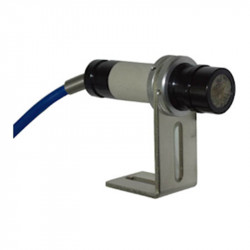
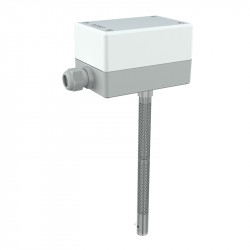
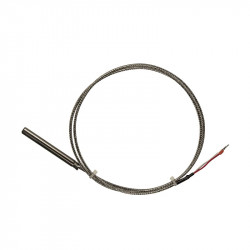
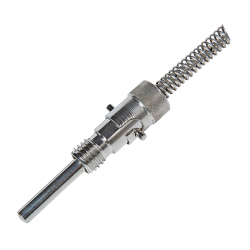
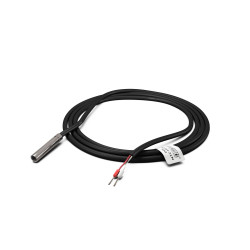
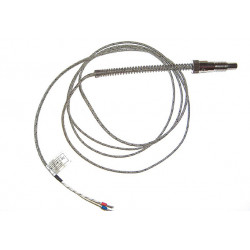
Zanechat komentář